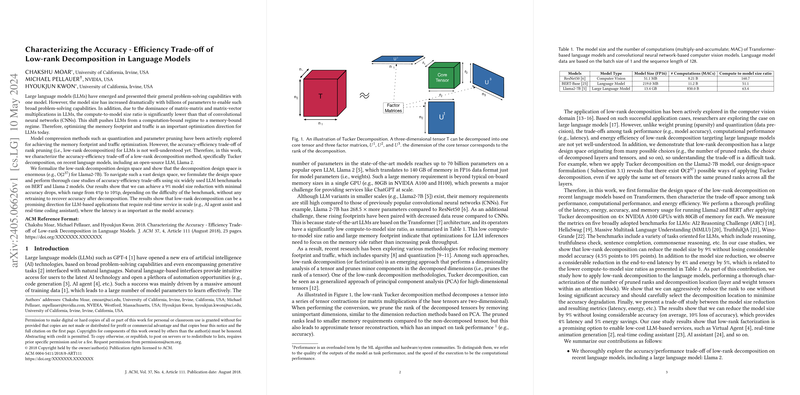Understanding the ACM Consolidated LaTeX Template
Introduction
The paper "The Name of the Title Is Hope" is all about the ACM consolidated LaTeX template, which provides a standardized way of formatting documents for ACM publication. This handy guide is beneficial whether you're new to ACM publishing or a seasoned author. The aim is to create a consistent style across all ACM publications, simplifying the authoring process and improving the readability of the documents.
Key Template Features
Multiple Document Types
The "acmart" document class can be utilized for various types of ACM publications, such as:
- Full-length conference papers
- Two-page abstracts
- Journal articles
- Extended abstracts for conferences
This flexibility is achieved by selecting the appropriate template style and template parameters.
Template Styles
Here's a breakdown of some template styles available:
- acmsmall: For most ACM journals.
- acmlarge: Specific journals like JOCCH and TAP.
- acmtog: For TOG (Transactions on Graphics).
For conference proceedings, the dominant style is sigconf. Variants like sigchi and sigplan cater to their respective conferences.
Template Parameters
Template parameters allow customization of document settings:
- anonymous, review: For double-anonymous submissions, anonymizes the work and includes line numbers.
- authorversion: A version suitable for author posting.
- screen: Enables colored hyperlinks.
Format and Style Rules
Non-Modifiable Elements
Modifying the template in ways like adjusting margins, changing typeface sizes, or altering line spacing is not allowed. Any detected changes will result in the document being returned for revisions.
Typeface
The template requires the use of the "Libertine" typeface family, which should already be included in your TeX installation. The use of other typefaces like "lmodern" or "ltimes" is discouraged as they override the preset typeface families.
Structuring Your Document
Title and Authors Information
- The title should use appropriate capitalization.
- Authors should be listed with full names and affiliations.
- Short titles and short author lists are necessary for header formatting.
Rights Information
Upon paper approval, authors will need to complete a rights form, which includes:
- ACM Reference Format on the first page.
- Rights management text.
- Conference information in page headers.
CCS Concepts and Keywords
For taxonomic and search-friendly purposes:
- Use the ACM Computing Classification System (accessible at https://dl.acm.org/ccs/ccs.cfm) for relevant classifiers and concepts.
- User-defined keywords are a list of chosen words/phrases that describe the research.
Numbered Section Commands
The document supports standard LaTeX sectioning commands like:
\section\subsection\subsubsection\paragraph
Proper numbering must be maintained and simulating sections using bold or italic text is not allowed.
Figures and Tables
Tables
The "acmart" class includes "booktabs" for high-quality tables:
- Table captions are placed above the table.
- Tables should float to the top of the nearest page.
Figures
Figures should use the "figure" environment and:
- Include a caption below the figure.
- Provide a description for accessibility.
- Optionally include a "teaser figure" before the body of the article.
Equations
Mathematical equations come in three styles:
- Inline Equations: Set within the text using the
format. - Display Equations: Centered, numbered equations produced by the "equation" environment.
- Non-Numbered Display Equations: Created using the "displaymath" environment.
Citations and Bibliographies
The use of BibTeX for references is recommended:
- Full author names and detailed referencing information are required.
- Example command:
\bibliography{bibfile}
Acknowledgments
The "acks" environment is used for acknowledgments, positioned just before the references.
1 2 3 |
\begin{acks}
...
\end{acks} |
Conclusion
The ACM consolidated LaTeX template is an invaluable tool for authors looking to submit to ACM publications. This guide simplifies the use of the "acmart" document class and helps ensure consistent, high-quality submissions.
For further details, authors can refer to the full documentation available at the ACM website. Happy writing!
